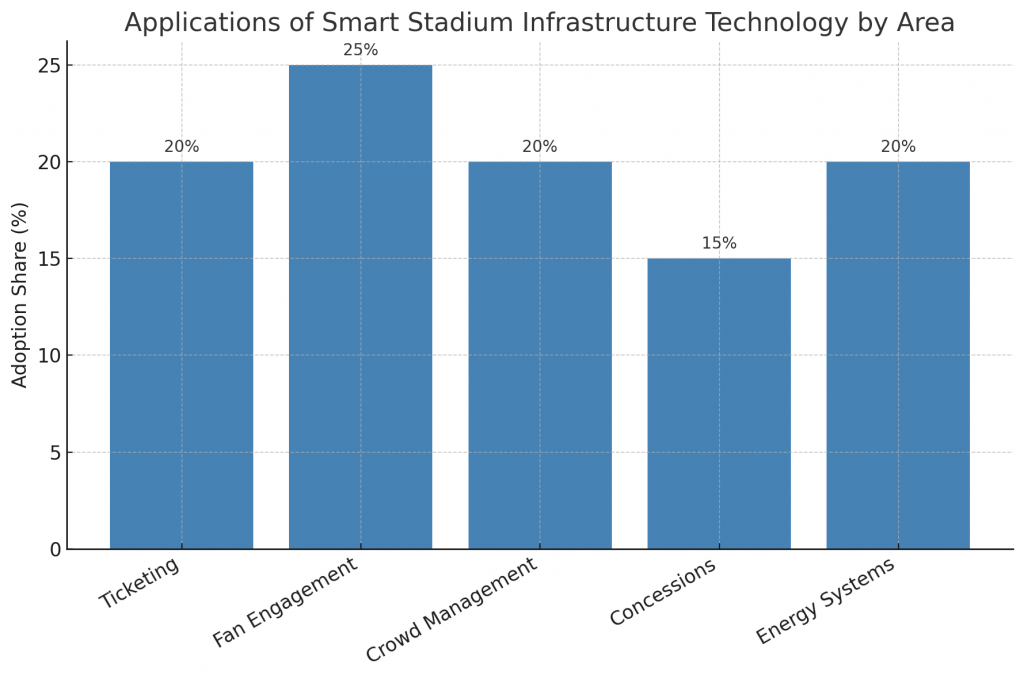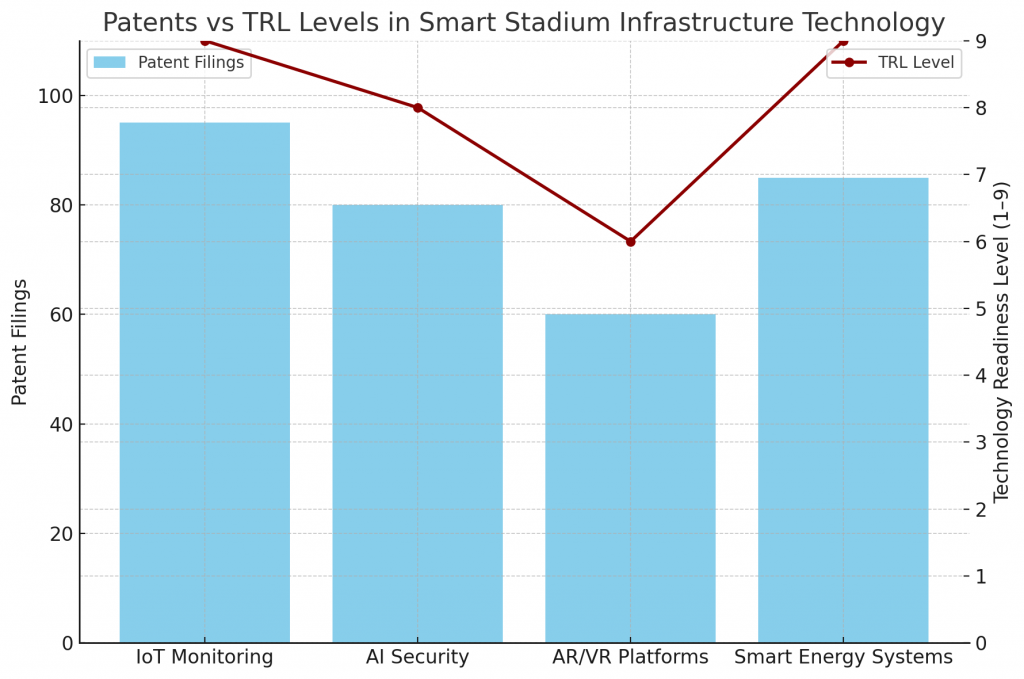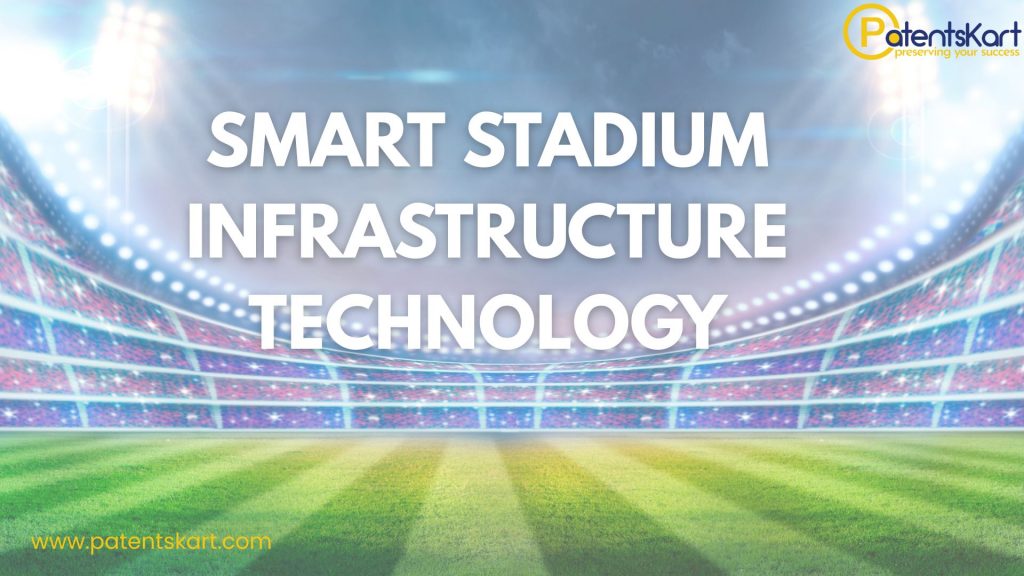Stadiums have always been more than just sports arenas—they are cultural icons, community hubs, and revenue engines. However, as fan expectations evolve and technology advances, stadiums are undergoing a radical transformation. At the center of this revolution is smart stadium infrastructure technology.
By integrating IoT, AI, AR/VR, digital connectivity, energy optimization, and advanced safety systems, smart stadiums provide immersive experiences while optimizing operations. From real-time crowd analytics to interactive fan engagement, smart stadium infrastructure technology is reshaping how sports venues operate and deliver value.
What Is Smart Stadium Infrastructure Technology?
Smart stadium infrastructure technology refers to the application of digital systems, intelligent devices, and connectivity solutions within stadiums to improve fan experience, operational efficiency, and sustainability.
Core components include:
- IoT sensors for real-time monitoring of crowd flow and facilities.
- AI-powered analytics for ticketing, security, and performance insights.
- 5G and Wi-Fi 6 connectivity enabling seamless digital engagement.
- AR/VR platforms for immersive viewing experiences.
- Sustainable energy systems reducing environmental impact.
This holistic integration ensures stadiums are future-ready, delivering both entertainment and operational excellence.
Why Is Smart Stadium Infrastructure Technology Important?
Stadium operators and sports organizations face mounting challenges:
- Fan expectations: Audiences want seamless digital experiences.
- Revenue generation: Venues must maximize profitability with smarter operations.
- Safety and security: Real-time monitoring is crucial for large crowds.
- Sustainability: Energy efficiency reduces costs and carbon footprint.
- Competition with digital streaming: Stadiums need to offer more than at-home viewing.
By addressing these issues, smart stadium infrastructure technology ensures sports venues remain competitive in a digital-first era.
How Does Smart Stadium Infrastructure Technology Work?
The functioning of a smart stadium involves interconnected systems:
- Data collection: IoT devices gather information on ticketing, crowd density, and facility usage.
- Connectivity backbone: High-speed 5G and Wi-Fi networks link all systems.
- AI-driven insights: Predictive analytics forecast crowd movement, concession demand, and traffic patterns.
- Fan engagement platforms: Mobile apps deliver AR replays, seat upgrades, and food ordering.
- Sustainability systems: Smart lighting, HVAC, and renewable energy integration reduce energy use.
Together, these elements make smart stadium infrastructure technology a comprehensive innovation.
What Are the Benefits of Smart Stadium Infrastructure Technology?
Key benefits include:
- Enhanced fan experience: Personalized engagement and real-time updates.
- Revenue growth: Dynamic ticket pricing, in-seat ordering, and merchandising.
- Operational efficiency: Automated maintenance and resource management.
- Improved safety: Real-time crowd monitoring and predictive security.
- Sustainability gains: Reduced energy consumption and waste.
For fans, it’s about immersion. For operators, it’s about profitability and safety. For society, it’s about greener venues.
What Are the Applications of Smart Stadium Infrastructure Technology?
Applications cover every aspect of stadium operations:
- Ticketing systems: AI-powered fraud detection and digital passes.
- Fan engagement apps: AR replays, interactive games, and loyalty rewards.
- Crowd management: IoT sensors for real-time movement tracking.
- Concessions and retail: Contactless ordering and cashless payments.
- Energy optimization: Smart grids and renewable integration.

These applications ensure holistic transformation of stadium ecosystems.
Which Companies Are Leading in Smart Stadium Infrastructure Technology?
Leading corporations investing in this space include:
- Cisco Systems: Networking and fan engagement solutions.
- Huawei: Smart connectivity infrastructure.
- IBM: AI-powered analytics for stadium operations.
- Siemens: Energy optimization and building automation.
- NEC Corporation: Smart surveillance and facial recognition.
These players showcase how smart stadium infrastructure technology is scaling globally.
Which Startups Are Innovating Rapidly?
Startups bring agility and niche innovations:
- WaitTime: AI-driven crowd management.
- Venuetize: Mobile-first fan engagement platforms.
- FanThreeSixty: Personalized digital fan experiences.
- Atomize: Dynamic pricing solutions for ticket sales.
- Green Sports Alliance startups: Sustainability-driven stadium technologies.
Their solutions strengthen the adoption of smart stadium infrastructure technology at both large and mid-sized venues.
What Do Patents and TRL Levels Indicate?
Patent filings highlight advancements in:
- IoT sensor networks for real-time monitoring.
- AI security systems for predictive safety.
- AR/VR engagement platforms for immersive fan experiences.
- Sustainable stadium designs integrating renewable energy.
Technology Readiness Levels (TRLs):
- IoT crowd monitoring: TRL 8–9, fully operational.
- AI fan engagement apps: TRL 7–8, nearing large-scale adoption.
- AR/VR integration: TRL 5–7, emerging with pilots.
- Smart energy systems: TRL 8–9, proven in global stadiums.

This patent and TRL activity indicates rapid innovation and commercialization.
What Are the Challenges in Adoption?
Despite promise, challenges remain:
- High capital costs: Upgrading infrastructure requires large investments.
- Integration complexity: Synchronizing legacy systems with new technologies.
- Cybersecurity risks: Connected networks are vulnerable to attacks.
- Consumer adoption: Fans must adapt to digital-first experiences.
- Regulatory hurdles: Privacy concerns over data collection.
These issues must be addressed for widespread success.
What Is the Future Outlook for Smart Stadium Infrastructure Technology?
The next decade will see:
- Global adoption: Stadiums across Asia, Europe, and the Americas going smart.
- Hyper-personalization: AI-driven experiences tailored to individual fans.
- Metaverse integration: AR/VR-enabled immersive sports viewing.
- Sustainability leadership: Carbon-neutral and energy-positive stadiums.
- Data monetization: Leveraging fan insights for new revenue streams.
Clearly, smart stadium infrastructure technology is the blueprint for the future of sports venues.
How Can PatentsKart Help?
PatentsKart empowers innovators in smart stadium infrastructure technology with:
- Patent landscapes to identify opportunities.
- Freedom-to-operate analysis to reduce risks.
- Competitor benchmarking to track rivals.
- TRL benchmarking to assess technology maturity.
- Licensing support to speed commercialization.
This ensures businesses remain ahead in the race to build smarter, safer, and more profitable stadiums.
Conclusion
As fans demand more engaging experiences and sustainability becomes a priority, smart stadium infrastructure technology is leading the way. From AI-driven crowd management to immersive AR replays, the stadium of the future is here.
By blending technology, sustainability, and fan engagement, smart stadiums create win-win solutions for fans, operators, and the planet. The future of sports will be played in smart venues powered by digital innovation.
FAQs About Smart Stadium Infrastructure Technology
Q1. What is smart stadium infrastructure technology?
It is the integration of IoT, AI, and digital solutions into stadiums for improved fan experience and efficiency.
Q2. Why are smart stadiums important?
They ensure safety, enhance fan engagement, boost revenue, and reduce environmental impact.
Q3. Which companies are leaders?
Cisco, Huawei, IBM, Siemens, and NEC Corporation.
Q4. What challenges exist?
High costs, cybersecurity risks, integration hurdles, and regulatory issues.
Q5. How can PatentsKart help innovators?
By offering IP insights, competitor intelligence, and commercialization strategies.







